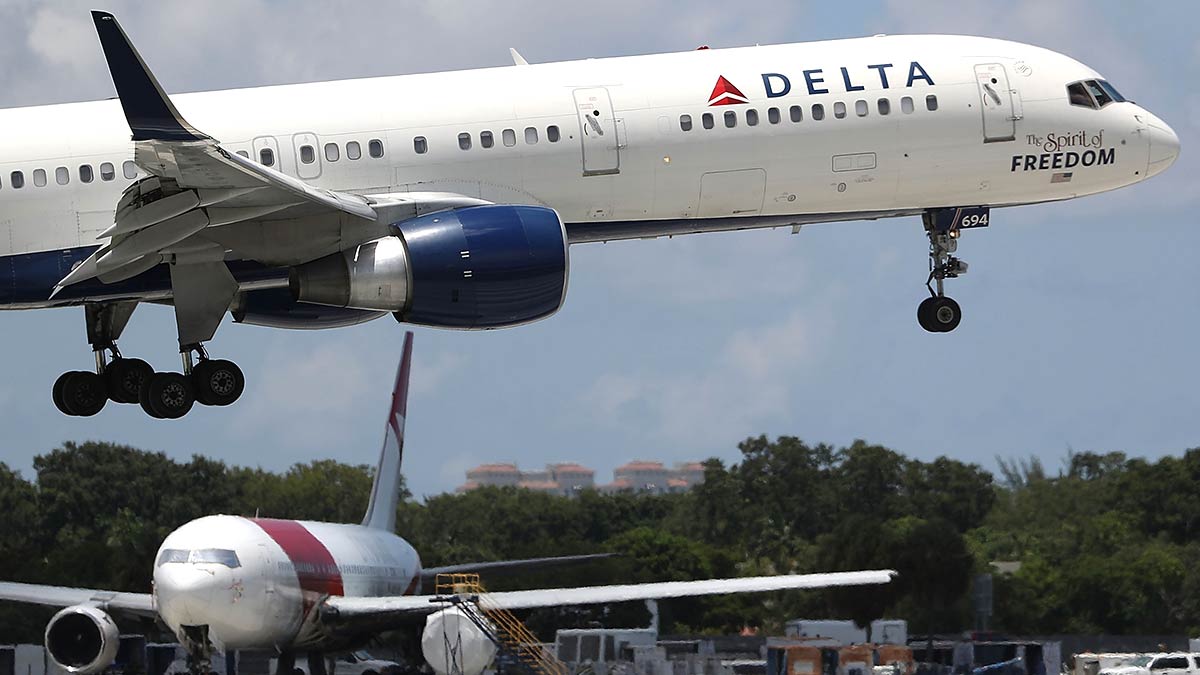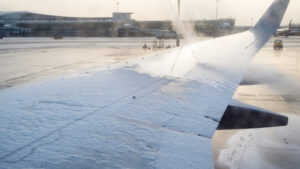Structural takes off as Delta seals 10-year crack detection deal

Take-off ... Structural seals deal to supply crack detection software to Delta. Pic: Getty
Aussie ingenuity will protect US airline Delta from fuselage cracks for at least the next decade after a deal was finally sealed with ASX-listed Structural Monitoring Systems last week.
Delta had for some time been testing Structural’s CVM sensor technology, which can detect cracks on airplanes in as little as 10 minutes.
Structural’s share price jumped sharply from $1.26 to $1.72 at the end of July on guidance that it expected to “provide complete, and final, details regarding the execution of this extremely important, and ‘company-making’, agreement to the market in the immediate near-term”.
On Thursday that news came through, with Structural (ASX:SMN) announcing a 10-year deal with Delta Airlines worth at least $US6 million to $US7 million ($A7.6 million to $A8.9 million).
Shares closed at $1.88 on Friday, valuing the company — which currently has no sales revenue — at $192.6 million.
Subsequent sales to other carriers are expected to generate revenues “many multiples higher” than those from Delta, with licence agreements peaking at about $US10 million to $US15 million per year, per operator.
Airlines are notoriously slow adopters of new technology, but this was beginning to change, Structural’s chief Toby Chandler told Stockhead after the announcement.
Chandler says the deal is an example of the airline industry moving away from “archaic processes”.
“It took a long time for the regulators, manufacturers, operators, pretty much the whole airline industry, to come up to speed,” he told Stockhead.
The vacuum-based structural health monitoring technology replaces very expensive archaic processes.
Under current rules, planes must be grounded to check for structural cracks.
Parts must be dismantled, checked and put back together. Even if the parts are fine, the entire plane still needs to be grounded.
Chandler says Structural Monitoring’s system – approved by the US Federal Aviation Administration and Boeing in 2015 for commercial testing by Delta – takes 10-15 minutes and doesn’t involve dismantling the plane.
Sensors are attached to a plane near points such as rivets where cracks may appear.
Below, a “gallery” of polymer sensors consisting of tubes sit just above the crack zone “almost like a bandaid”.
The tubes are alternately filled with ambient air pressure in a vacuum.
If there is a crack, the air breaks the vacuum. If the sensors are not installed properly, it is impossible to create a vacuum — establishing a fail-safe against wrongly installed equipment.
One issue that has potential for creating cracks in Structural’s relationship with Delta is the Aussie company’s recent push into the Middle East.
Delta is one of a number of US airlines who accuse Middle East governments of unfairly subsidising Gulf airlines.
However Chandler was not concerned that negotiations with Middle East airlines such as Emirates, Etihad or Qatar Airlines would upset Delta.
“Delta is very interested in us getting this technology in as many aircraft operators in the world as we can,” he said.
“The industry is just too small. You just can’t get upset [if your suppliers work with rivals].”
UNLOCK INSIGHTS
Discover the untold stories of emerging ASX stocks.
Daily news and expert analysis, it's free to subscribe.
By proceeding, you confirm you understand that we handle personal information in accordance with our Privacy Policy.








